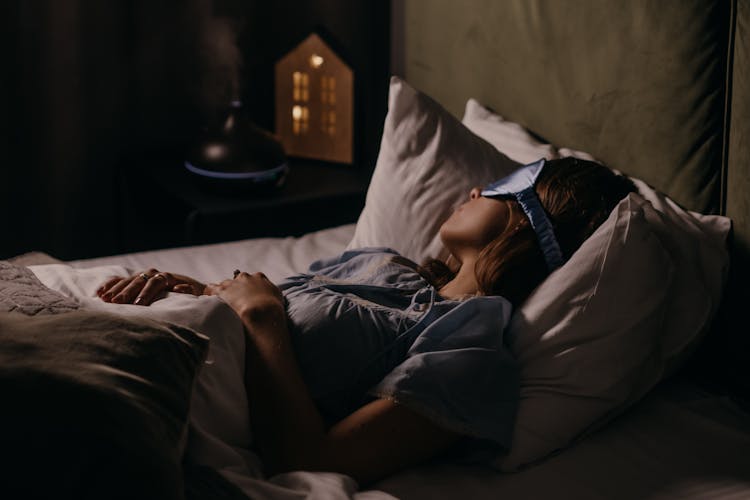All Categories
Featured
Table of Contents
- – Mindful Breathing: A Gateway to Calm
- – Calm in Every Breath: Deep Breathing Techniques
- – The Importance of a Tranquil Environment
- – Practical Techniques for Mindful Living
- – The Chill Zone: Your FAQs on Relaxation Techni...
- – What are some effective relaxation techniques?
- – How can I create a calming environment at home?
🔍 TL;DR Summary
- 🧘♀️ Utilize mindfulness and meditation for a focused mind.
- 💨 Employ deep breathing exercises to foster relaxation.
- 🏡 Design a calm environment to enhance your relaxation experience.
- 📖 Reflect on your thoughts and feelings for better mental clarity.
Relaxation techniques serve as powerful tools for individuals looking to combat the stresses of daily life. Particularly useful are methods such as mindfulness, deep breathing exercises, and the intentional creation of a calm environment. Engaging in these therapeutic practices can dramatically ease tension and anxiety, helping individuals return to a state of balance and well-being.
Understanding relaxation is fundamental to achieving mental and physical peace. It is often described as a state of deep rest involving a noticeable slowing down of both mind and body. This state can be cultivated through the practice of mindfulness and meditation, which encourages awareness and presence in the moment.
Mindful Breathing: A Gateway to Calm
Mindfulness involves a collection of breathing techniques, guided imagery, and other practices designed to soothe the body and mind.Relaxation Techniques - StatPearls Rooted in ancient traditions, mindfulness has been shown to reduce stress and anxiety significantly. Engaging in these practices encourages individuals to break away from chaotic thoughts that can lead to overwhelming stress. Moreover, mindfulness practices have the added benefits of promoting healthier eating habits and fostering improved relationships through better emotional regulation.
Meditation, particularly mindfulness meditation, focuses the mind on the present moment. This practice effectively helps eliminate scattered thoughts that trigger anxiety and stress. Research indicates that mindfulness and meditation lead to increased cognitive flexibility, improved emotional regulation, and a notable decrease in anxiety and depression. Those who commit to regular mindfulness routines often experience greater emotional resilience and a heightened ability to manage life's challenges.
Calm in Every Breath: Deep Breathing Techniques
Deep breathing is a straightforward yet highly effective method for initiating the body’s relaxation response. One particularly beneficial technique is belly breathing, which helps transition the body from a 'fight or flight' state to a more relaxed orientation. Focusing on steady breathing, where one allows the breath to expand the belly, chest, and lungs, serves to gently release tension during exhalation. This simple but profound practice invites calm into even the most stressful situations.
Many deep breathing exercises encourage individuals to relax their facial muscles, jaw, neck, and shoulders while concentrating on their breathing. The impact of effective deep breathing can be seen almost immediately, allowing practitioners to regain composure in the face of anxiety.
The Importance of a Tranquil Environment
Creating a calm environment plays an essential role in relaxation. One's surroundings can significantly affect how easily relaxation is achieved. Tranquility can be fostered by eliminating distractions such as television noise and clutter. Turning to activities that bring joy, like savoring favorite foods or listening to soothing music, further heightens the potential for relaxation. It’s crucial to design an atmosphere that invites calm, providing a safe space to unwind from the pressures of daily life.
Self-reflection is another powerful practice. By taking moments to pause, breathe deeply, and release negative thoughts, individuals can effectively manage their emotional landscape. Connecting with oneself through reflection will aid in moving forward positively throughout the day.
Practical Techniques for Mindful Living
The journey to relaxation and anxiety reduction can be significantly enhanced through practical strategies. Consider the following actionable tips:
- Take Deep, Mindful Breaths: Focus on belly breathing while allowing tension to release with each exhale.
- Practice Mindfulness Meditation: Engage in guided imagery, and immerse yourself in the present moment to effectively manage stress.
- Utilize Deep Breathing Exercises: Relax and center your facial features and neck while concentrating on steady breathing.
- Create a Calm Environment: Disconnect distractions and indulge in joyful activities to help facilitate relaxation.
- Engage in Self-Reflection: Take moments to pause, reflect, and consciously move forward in a positive light throughout your day.
By incorporating these expert tips and reliable strategies into daily life, individuals are well-equipped to manage symptoms of stress and anxiety effectively. As such, the pursuit of relaxation unfolds not only as a means of coping with current stressors but also acts as a gateway to a healthier, more fulfilling lifestyle.
The Chill Zone: Your FAQs on Relaxation Techniques
What are some effective relaxation techniques?
How can I create a calming environment at home?
Key Takeaways
- 🧘♂️ Consistently practicing mindfulness and meditation enhances emotional well-being.
- 💭 Deep breathing exercises effectively aid relaxation and stress reduction.
- 🏠 Arrange your surroundings to create a calming atmosphere conducive to relaxation.
- 📅 Regularly practice self-reflection to manage negative thoughts and emotions.

Review crucial elements now
Table of Contents
- – Mindful Breathing: A Gateway to Calm
- – Calm in Every Breath: Deep Breathing Techniques
- – The Importance of a Tranquil Environment
- – Practical Techniques for Mindful Living
- – The Chill Zone: Your FAQs on Relaxation Techni...
- – What are some effective relaxation techniques?
- – How can I create a calming environment at home?
Latest Posts
Effective Techniques for Managing Stress
Achieving Relaxation: Practical Tips for Reducing Stress and Anxiety
Discovering the Scenic Beauty of the Blue Ridge Parkway
Latest Posts
Effective Techniques for Managing Stress
Achieving Relaxation: Practical Tips for Reducing Stress and Anxiety
Discovering the Scenic Beauty of the Blue Ridge Parkway